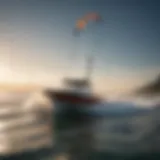Capture Stunning Aerial Footage with GoPro Kites
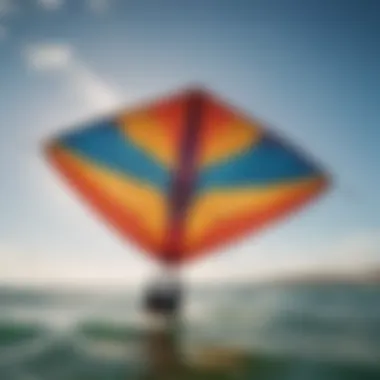

Intro
In the exhilarating realm of kitesurfing, where the wind dances with the ocean, capturing every thrilling moment becomes essential for enthusiasts and pros alike. One way to do this is by integrating a GoPro camera with your kite equipment. Imagine soaring high above as you perform a slick maneuver, all while recording those breathtaking shots that showcase your skills and the beauty of nature around you. This guide will take you on a journey through the captivating world of kitesurfing and the art of filming action from your kite.
Integrating technology into kitesurfing not only enhances your experience but serves as a platform for storytelling. Picture yourself gliding over pristine waters, waves crashing beneath your board, while your GoPro captures every splash and turn. It’s about connecting with your audience and sharing your adventure in vivid detail. In this guide, we will dive into the equipment essentials, mounting methods, and safety practices that you should consider to enrich your kitesurfing escapades.
To kick things off, we’ll start with an overview of the top gear—kites, boards, and accessories—that are integral for both riding the winds and shooting the action. So, grab your gear and get ready to elevate your kitesurfing experience with some incredible footage!
Prelude to Kitesurfing and Technology
Understanding the marriage between kitesurfing and technology opens the door to new dimensions of the sport. Kitesurfing itself is a thrilling activity, where riders harness the power of wind by using a large kite while being on a board. But when you add technology into the mix, particularly action cameras like GoPro, it becomes a different ball game entirely. This integration of technology allows both amateurs and seasoned riders to capture their stunts and experiences, turning fleeting moments into memorable visual narratives.
In essence, this intersection enriches the kitesurfing experience, serving several purposes. For one, documenting rides can help enthusiasts track their progress over time. It offers visual evidence of achievements, however big or small, enabling personal growth analysis. Additionally, sharing these moments online can foster a sense of community, inspiring others to join the sport.
By incorporating technology into kitesurfing, riders face fresh challenges too. The complexities of gear, filming angles, and ensuring equipment safety during action become paramount. With wind conditions often being unpredictable, having reliable gear that can withstand the rigors of the sport is crucial.
Understanding how kites and cameras work together allows kitesurfers to not only enhance their skills but also share their journey with a broader audience. In this article, we will delve into:
- The various aspects of kitesurfing, establishing a solid foundation for newcomers.
- How action cameras have evolved and the significant role they play in modern adventure sports.
- The tangible benefits that come with using a GoPro while kitesurfing, from unique visual perspectives to enhanced ride experiences.
Embracing this advancement offers an opportunity to elevate your kitesurfing adventures. Jumping into the details, let's start with an overview of kitesurfing, the sport that pairs perfectly with technology.
Understanding the GoPro Camera
When diving into the world of kitesurfing, incorporating technology can amplify the thrill and creativity of your experience. One such technology is the GoPro camera. Understanding its capabilities is crucial for capturing breathtaking moments on the water. Whether you're shooting a calm dusk session or performing daring aerial stunts, comprehending how GoPro cameras work is part and parcel of enhancing your visual storytelling.
Key Features of GoPro Cameras
GoPro cameras are lauded for several standout features that make them the go-to choice for action sports enthusiasts. Some of the features worth noting include:
- Durability: These cameras are built to withstand the rigors of outdoor activities. They’re often waterproof, shockproof, and ready for tough conditions—ideal for the unpredictability of kitesurfing.
- High-Quality Video: Most models capture high-definition video at various frame rates, allowing you to tailor your recording to match the intensity of your session. Whether it’s smooth slow-motion or crisp fast-paced action, GoPro has you covered.
- Wide Field of View: The ability to capture more of the surrounding environment gives your footage an expansive look, helping to convey the vastness of the ocean and the freedom that kitesurfing offers.
- Stabilization Technology: Features like HyperSmooth stabilization ensure that the footage remains steady, even during bumpy rides, which is particularly handy when you’re zooming across the waves.
- User-Friendly Interface: With a straightforward setup and a mobile app for remote control, you can manage your recordings effortlessly even while tackling the elements.
These features emphasize why a GoPro is not just any camera, but a vital tool in capturing kitesurfing adventures. Each click of the shutter can produce footage that'll leave your friends speechless and elevate your social media presence.
Comparison with Other Action Cameras
When you put GoPro side by side with other action cameras, the question often arises: is it really worth the investment? To put it simply, yes, but let’s break that down.
- Image Quality: While several action cameras offer competitive image quality, GoPro consistently ranks higher in color accuracy and resolution, particularly for underwater footage.
- Ecosystem of Accessories: Unlike many of its competitors, GoPro has a wide array of mounts and accessories that can be integrated seamlessly. From helmet mounts to gimbal stabilizers, the variety helps you maximize your recording options.
- Battery Life: Action cameras can differ significantly in battery performance. Generally, GoPro cameras use efficient batteries, but it’s worth noting that in high-resolution settings, battery life could take a hit—something to plan around when you’re out on the water.
- Community and Support: With a large community of users, finding tips, tricks, or troubleshooting help is easier than with lesser-known brands. The GoPro subreddit often has members sharing their latest captures, editing techniques, and advice.
In summary, while action cameras might each have their unique selling points, the benefits of choosing a GoPro for kitesurfing lie in its impressive features, versatility, and community support. Each element contributes to a holistic approach of blending technology with the excitement of this adrenaline-fueled sport.
"The best camera is the one that's with you."
This rings especially true when you’re out kiteboarding, where capturing the moment can be just as exhilarating as the ride itself.
Benefits of Using a GoPro on a Kite
The integration of a GoPro camera with kitesurfing opens up a new dimension for capturing the thrilling experience that this sport offers. From the wind whipping through your hair to the rush of gliding over waves, using a GoPro allows you to immortalize these electrifying moments from unique angles. Here, we will explore some critical points regarding the advantages of using a GoPro on a kite.
Capturing Unique Perspectives
Mounting a GoPro on a kite enables kitesurfers to record footage that is simply not possible with traditional stationary cameras. The camera can capture breathtaking aerial views as it soars through the sky, providing a bird's-eye perspective of not only the rider but also the surrounding landscape.
When you watch the footage, it feels like you’re flying with the kite itself. Unlike human-operated cameras, the GoPro can take you wherever the wind goes; this opens the door to creativity and originality in your recordings. You can experiment with shots from above the water, showcasing the beauty of the ocean and the diverging waves.
- Unique angles allow for:
- Daring high-flying stunts that keep viewers on the edge of their seats.
- A panoramic view of the coastline, enhancing the overall visual storytelling of your kitesurfing adventures.
- Close-up shots during specific maneuvers, allowing you to analyze your technique.
Furthermore, utilizing features like time-lapse and slow motion can turn an ordinary session into extraordinary video content. It's like having a digital magic wand in your pocket, capable of creating stunning visuals that will impress friends and possibly help you win social media fame.
Enhancing Your Kitesurfing Experience
Besides offering creative advantages, using a GoPro on your kite also enhances the overall kitesurfing experience itself. Imagine cruising through the waves with a camera capturing every twist and turn; the adrenaline rush gets further amplified when you know someone will be able to see it later.
The ability to review recorded footage lets you analyze your performance. For example, you can see where you might need improvement, whether it’s in your speed, jumping technique, or even your landing.
This can lead to significant progress in your skills, as you can pinpoint exactly what you need to work on.
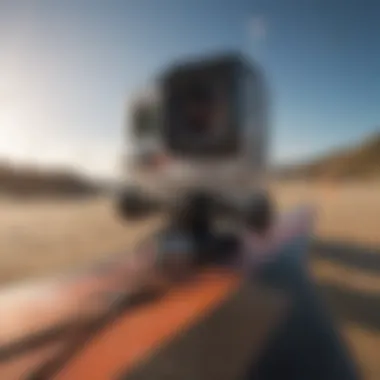

- Benefits include:
- Self-Assessment: Study your recorded sessions to refine techniques.
- Motivation: Watching your own progress can be a source of motivation to keep improving.
- Sharing: Create inspiring content to share with other kitesurf enthusiasts.
Ultimately, employing a GoPro with your kite doesn’t just serve to capture the action. It transforms every session into an opportunity for growth and creativity, making each outing something more memorable.
"The only limit to our realization of tomorrow will be our doubts of today." - Franklin D. Roosevelt
In summary, the advantages of a GoPro extend beyond mere visual documentation. They're instrumental in providing fresh perspectives and enriching your overall kitesurfing journey, ensuring that you can relive those stunning moments time and again.
Selecting the Right Equipment
Choosing the right equipment when mounting a GoPro on your kite can make or break your kitesurfing experience. The right choices ensure that you not only capture stunning footage, but also keep your camera secure and functioning through various weather conditions. This section outlines key elements to consider, from selecting the appropriate GoPro model to understanding the various mounting options available.
Choosing the Right GoPro Model
When it comes to selecting a GoPro, your choice should align with your filming goals. Several models offer distinct features. The GoPro Hero 10, for instance, raises the bar with its improved stabilization and low-light performance, making it ideal for action-packed sessions. Conversely, if simplicity and cost are your primary concerns, an earlier model like the GoPro Hero 8 still provides commendable quality.
Consider the following factors:
- Resolution and Frame Rate: Higher resolutions and frame rates can capture more detailed footage, especially during high-speed maneuvers.
- Size and Weight: The lighter the camera, the less it affects your kite’s performance. Compact models are easier to maneuver.
- Durability: Look for models marketed as rugged or waterproof, as kitesurfing inherently involves exposure to elements.
Camera Mounting Options
When it gets to mounting your GoPro, the method you choose has an enormous impact on footage quality. Here, we’ll discuss three primary types of mounts: fixed mounts, adjustable mounts, and DIY mounts.
Fixed Mounts
Fixed mounts are designed for situations where you want a steady shot from a specific angle. The most basic type of mount, fixed mounts, are frequently secured to the kite’s leading edge. Their key characteristic lies in their simplicity; you set it and forget it. For example, if you want a steady dynamic view of the rider as they jump and maneuver, a fixed mount pointing outward is a great choice.
Pros:
- Simplicity in setup; minimal adjustments needed post-installation.
- Stability results in smooth footage under normal conditions.
Cons:
- Limited angle versatility; once it's set, changing perspectives means re-mounting.
- In a rapid-changing environment, capturing unexpected angles is tricky.
Adjustable Mounts
Adjustable mounts provide the versatility that many kitesurfers crave. These mounts allow for angle adjustments while mounted or even basic repositioning during a session. This flexibility means you can catch those breathtaking moments without the hassle of completely remounting the camera. It’s like having the best of both worlds!
Pros:
- Adaptability; they can be altered mid-ride which is great for mult-angle captures.
- Help you achieve different types of shots without hassle.
Cons:
- They can be bulkier, which might slightly affect the aerodynamics of the kite.
- Slightly complex setup, may require a bit more experience to ensure stability.
DIY Mounts
For the truly creative and resourceful kitesurfers, DIY mounts allow customization to cater specifically to your needs. Materials can range from affordable ones like PVC pipes to more specialized equipment found in skate parks. This often leads to some unique and one-of-a-kind views that standard mounts cannot provide.
Pros:
- Fully customizable based on the footage you want and the conditions expected.
- Budget-friendly; can be created with materials already on hand.
Cons:
- Require more time for setup and testing.
- May lack stability if not constructed carefully, risking equipment during flights.
In summary, the right equipment choice ensures a seamless kitesurfing experience and allows you to focus on capturing breathtaking footage. Whether you opt for fixed, adjustable, or DIY mounts, understanding their attributes will help elevate the quality of your kitesurfing videos. Choosing wisely not only preserves your gear but enhances your entire kitesurfing adventure.
Mounting Techniques for Optimal Footage
When it comes to capturing spellbinding visuals while kitesurfing, mounting techniques for your GoPro camera play a pivotal role. The way you affix the camera not only influences the quality of the footage but also enhances your overall kitesurfing experience. A carefully considered mounting point can yield stunning perspectives, making your videos even more appealing for your audience.
The choice of how and where to mount your GoPro helps in gathering unique footage that standard beach shots simply can't offer. Using specific mounting techniques, you can harness the essence of kitesurfing — the thrill of the wind, the rush of the water, and the awe of nature in action. Understanding the elements of best practices and safety considerations will put you one step ahead in this exhilarating art.
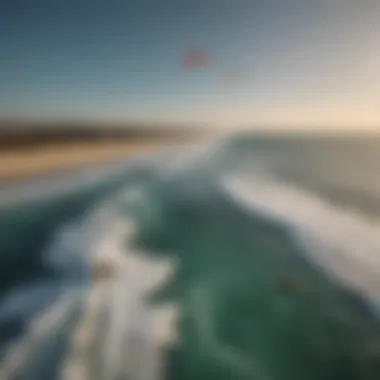

Best Practices for Kite Mounting
Effective mounting begins with knowing the ideal placements. Generally, these can be broken down into a few notable strategies:
- Harness Mounting: Attach the camera to your harness for a dynamic vantage point. It gives viewers a direct feel for your movements. However, ensure it is secured properly to avoid unwanted shifts.
- Kite Lines: Some riders prefer to attach their GoPro to the lines of the kite. This setup captures breathtaking aerial shots that showcase soaring heights and the vastness of the sea. Make sure the camera isn’t too close to the bridle lines to prevent interference.
- Top of the Kite: Fixing the GoPro on top of the kite can create a surreal bird's-eye view of your sessions. It brings forward the blues of the ocean and the colors of the sky. Care must be taken to keep the camera secure, as excess flapping can cause unwanted shakes in the footage.
In terms of capturing optimal footage, keep an eye on the wind conditions. Strong wind can cause excessive vibration or even dislodge a poorly attached camera. Always conduct a quick check before you hit the water
Safety Considerations When Mounting
While it is thrilling to film your kitesurfing adventures, safety shouldn't take a backseat. Here are some key considerations you ought to keep in mind:
- Secure Attachment: Always double-check that your GoPro is firmly attached to the mount. A loose camera can not only ruin your shots but may also become a dangerous projectile that can injure yourself or others.
- Weight Distribution: Be mindful of where you place the camera. Excess weight on one side of the kite may throw off its balance, affecting your control. Experimentation may go a long way but isn't without its own risks.
- Know Your Environment: Be conscious of your surroundings. Certain obstacles, like other kites or structures on land, can become a hazard if you stray too far in their direction while mounted up.
Ultimately, a proper balance between creativity and safety can lead to breathtaking footage without forfeiting your well-being.
Always remember, the goal is to catch those epic moments, but staying safe on the water remains paramount.
By drilling down into these mounting techniques and safety tips, you are setting yourself up for a more successful kitesurfing experience. Whether you're gliding through waves or dancing in the air, the right mount can perfectly capture your adventure, preserving it for countless views later.
Filming Strategies for Spectacular Captures
When it comes to capturing the thrill and beauty of kitesurfing, strategies behind filming play a pivotal role. Using effective filming techniques can turn ordinary footage into something jaw-dropping, showcasing the adrenaline rush that comes with carving through the water and soaring through the air. With adrenaline levels high, one must think through timing and lighting, fundamentally understanding natural events that can enhance visuals.
Timing Your Shots
Getting the timing right when filming with a GoPro on a kite can be a game changer. Imagine you are zipping through the waves and you have that perfect moment just waiting to be caught on camera. For optimal results, you should learn to anticipate those dynamic moments—like a jump, a trick, or when you are about to ride a swell.
Here are a few tips for nailing the timing of your shots:
- Know your maneuvers: If you are preparing for a specific move, a little practice can help you predict when you’ll be at your peak moment.
- Set your GoPro’s burst mode: Burst mode allows the camera to take multiple shots in quick succession, ensuring you capture the action without delay.
- Plan your angles: Consider how the angle of your shots affects the outcome. A well-timed turn or jump can transition your footage from average to exceptional.
"Timing is everything in kitesurfing, not just on the water but also behind the lens."
Utilizing Natural Light
Natural light can work wonders for your kitesurfing footage, or it can complicate things considerably. The type of light during your filming can make a huge difference in video quality. Here’s how to make the most of it:
- Golden Hours: Early mornings or late afternoons, often dubbed the golden hour, provide flattering light that can enhance colors and reduce harsh contrasts that may distract viewers.
- Angle of the Sun: Pay attention to where the sun is located. Positioning your kite and board in relation to the sun can yield brighter, more interesting visuals.
- Cloud Coverage: Overcast days can even be beneficial, as they diffuse light, resulting in softer shadows and less glare, which can make your footage look more even.
By keeping an eye on both timing and natural light, you can elevate your shooting game. These aspects will ensure that every kite session is not just thrilling for you, but visually stunning for anyone watching your videos.
Post-Filming: Editing Your Footage
Once the excitement of kitesurfing fades and you’re back on solid ground, the journey doesn’t end. The next crucial phase is editing your footage. Taking the raw clip you’ve captured with your GoPro and transforming it into something extraordinary is where the magic happens. Post-filming editing not only allows you to refine your footage but also gives life to your adventures, showcasing the thrill of your rides in an artful manner. It’s your opportunity to tell a story that resonates, connecting with viewers, whether they’re friends, family, or a broader audience online.
Editing enhances your footage in several ways. First, it allows you to cut out any clunky parts where the action lagged or when the kite took a nosedive. Second, it enables the addition of music, transitions, and text overlays, breathing excitement and clarity into your video. This creates a beautifully cohesive piece that highlights the breathtaking moments of kitesurfing, facilitating engagement with your audience.
Equally important is to bear in mind the technical aspects, such as color correction and stabilization. Often, the winds could make for shaky shots. Utilizing editing software, you can smooth out those jerking movements, creating a viewing experience that feels immersive and polished.
"Editing is not just about slicing and dicing; it’s about conveying the soul of the experience to others."
Choosing Editing Software
When it comes to editing your kitesurfing footage, having the right tools makes a world of difference. Several software options cater to different skill levels and requirements.
- Beginner-Friendly: If you're just dipping your toes in the water, programs like iMovie or Windows Movie Maker provide intuitive interfaces. These options allow you to focus on the basics without overwhelming technical jargon.
- Intermediate Options: For those looking to step it up a notch, software such as HitFilm Express or DaVinci Resolve provides advanced features like green screen effects and color grading, while still being fairly approachable for those who have some familiarity with video editing.
- Professional Suites: If you're aiming for that Hollywood touch, consider Adobe Premiere Pro or Final Cut Pro X. These platforms come packed with an arsenal of tools and resources, though they may require a steeper learning curve.
Basic Editing Techniques
Now that you've picked your software, it’s vital to get familiar with some basic editing techniques to elevate your kitesurfing videos. Here are a few practices to consider:
- Trim and Cut: Start by trimming surplus clips to maintain viewer interest. In kitesurfing, moments that entail waiting for wind can be cut out without the loss of narrative.
- Transitions: Using transitions like fades or wipes can maintain continuity between clips or scenes, keeping the viewer engaged.
- Add Music: The soundtrack sets the mood and can dramatically affect viewer experience. Choose tracks that complement the flow of your footage, creating a rhythmic beat to your actions.
- Text Overlays: Including text for context can enhance comprehension. Use phrases to introduce different segments, such as "High Winds Ahead!" or "Smooth Sailing”, providing viewers time to acclimate to each scene.
- Color Grading: Adjusting brightness, contrast, and saturation can significantly enhance your visual storytelling. Don’t shy away from experimenting until you find what looks best for your overall aesthetic.
Mastering these techniques will not only improve the quality of your kitesurfing videos but also establish a unique style that resonates with your audience.
Showcasing Your Kitesurfing Videos
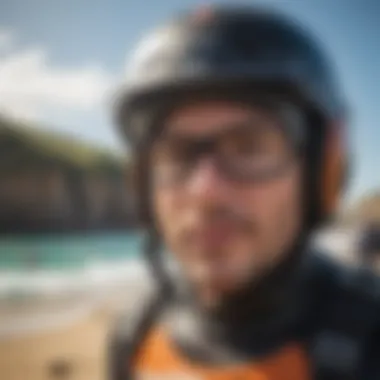

Sharing your kitesurfing adventures with a wider audience represents more than just a method of achieving recognition; it is a means of capturing and preserving fleeting moments during those adrenaline-pumping sessions. Using a GoPro to film your exploits can produce stunning visuals, but the next step, showcasing that footage, is equally crucial. It’s where you not only display your talent but also share your passion and craft your narrative.
Sharing on Social Media Platforms
In today’s digital age, social media platforms serve as powerful channels to present your kitesurfing escapades. Whether you prefer Instagram, Facebook, or platforms like TikTok, each offers unique capabilities to engage audiences. Here are a few key points to consider while sharing:
- Visual Appeal: High-quality footage from your GoPro can catch the eye of fellow enthusiasts, making them stop scrolling and take notice. The vibrant colors of the ocean and the dynamic motion of kites can create a compelling visual feast.
- Engagement: Interaction is crucial. Asking viewers to comment or share their own experiences can boost engagement. Include questions like, "What's your favorite kitesurfing spot?" to stimulate discussions.
- Hashtags: Use relevant hashtags, like #Kitesurfing, #GoPro, or area-specific hashtags, to increase the visibility of your posts. This helps your videos reach those who share an interest in the sport or technology.
"Social media is like an open book. The more engaging your story, the more followers you draw in."
Building an Online Portfolio
Creating an online portfolio dedicated to your kitesurfing videos can serve as a vast archive, showcasing your skill progression and visual storytelling abilities. Here's how to approach this:
- Dedicated Website or Blog: Having your own site gives you complete control over presentation. You could opt for platforms like WordPress to create a visually appealing portfolio.
- Curated Content: Instead of randomly posting, consider curating your best work. Show a range of skills — jumps, tricks, and serene moments. This variety not only highlights your versatility but also keeps viewers interested.
- About Me Section: Don’t shy away from sharing your journey. Include an 'About Me' section that tells your story, underlying your passion for kitesurfing and the technology you use, like your GoPro. This personal touch can forge a connection with your audience.
- External Links: Connect your portfolio to social media channels. Link your social media to your website for easy navigation between platforms, ensuring your audience can follow your adventures across various media.
The act of showcasing isn’t simply about the footage, but how you engage your audience and build a community around shared interests. Whether through social media or a personal portfolio, your kitesurfing videos can turn into a source of inspiration and connection, both locally and globally.
Challenges of Using GoPro on Kites
When you decide to integrate a GoPro with your kite, it’s not all smooth sailing. There are challenges that come into play, each with their own implications that could affect your experience. Understanding these hurdles is crucial to ensure that you capture the breathtaking footage you’re hoping for, while also keeping your gear intact and operating effectively.
Wind and Weather Influences
Navigating the elements is part and parcel of kitesurfing, and when you’ve got a camera attached to your kite, these elements take on added significance. Wind conditions can shift dramatically, impacting how your GoPro captures footage. Too strong of winds can cause instability in your shots, leading to shaky or blurry results. Conversely, light winds may not provide enough lift, resulting in uninteresting or flat visuals.
- Gear Setup Recommendations: Before hitting the water, check local weather forecasts. Use weather apps to understand wind patterns. This way, you can plan your session around more favorable conditions.
- Positioning Matters: Ensure that the camera is secured but also adjusted to capture the best angles, considering that the kite will move in response to the wind.
The weather also adds layers of complexity to your shoots. Rain or high humidity can affect camera performance, and moisture can lead to fogged lenses. Using a splash-proof GoPro housing can help mitigate these effects, but always remember that prolonged exposure can still introduce risks.
"Take the time to be mindful about conditions; it will pay off with the quality of footage you collect."
Navigating Potential Equipment Damage
Equipment damage is another concern that frequently rears its head when attaching a GoPro to your kite. While GoPro cameras are generally durable, the turbulent nature of kitesurfing combined with the forces at play can lead to equipment issues.
- Physical Impacts: Collisions can happen! Whether it's bumping into another kite, a sudden drop, or unexpected turbulence, your camera could be at risk. Securely mounting the camera is key, but no amount of planning can completely remove the chance for mishaps.
- Corrosion and Salt Exposure: Saltwater is notorious for its corrosive properties. If not properly cleaned, it can lead to malfunction over time. Make it a habit to rinse your camera and all mounts with fresh water after each session.
In summary, recognizing the challenges posed by wind, weather, and potential damage can significantly bolster your overall kitesurfing experience. By being aware of these factors and planning accordingly, you can set yourself up for a successful filming adventure in this exhilarating sport.
Future Innovations in Kitesurfing Technology
The world of kitesurfing, much like the beaches it thrives on, is perpetually evolving. As enthusiasts search for ways to improve their experience on the water, technology stands as a key player, setting the stage for future innovations. Within this context, the advancements in camera technology and aerial recording methodologies combined with kitesurfing gear opens up new frontiers for creativity, safety, and the sport's overall experience. Understanding these trends is crucial for any kitesurfer who wishes to stay ahead of the curve.
Trends in Action Camera Development
In the grand theater of action cameras, GoPro is, without a doubt, one of the stars. Yet, the stage is getting crowded as competitors develop innovative features. Future trends will likely include enhanced stabilization systems, allowing for smoother footage, regardless of how choppy the waters may be. Imagine, for a moment, the wind pulling the kite in one direction while you’re attempting to stay upright on the board; a camera with top-notch stabilization can make all the difference, capturing every thrilling twist and turn without the distracting shake.
Moreover, the integration of artificial intelligence in action cameras is on the horizon. With AI, a camera can adjust settings automatically based on changing light conditions or movement patterns. More than just a nifty feature, it can save precious moments as you ride the waves without fiddling with your camera. Video quality might also see an upgrade, particularly in low-light conditions, enabling remarkable shots during golden hour or even at dusk, as the sun dips below the horizon.
"The future of action cameras isn’t just in resolution – it’s in intelligent adaptability."
The Role of Drones in Kitesurfing
While action cameras hold significant sway in the kitesurfing scene, drones are emerging as powerful allies in capturing breathtaking aerial footage. As these flying devices become more sophisticated and affordable, kitesurfers can now utilize drones to get stunning shots from angles that would otherwise be unreachable. This technology makes it easy to document your rides from above, offering sweeping views that a GoPro mounted on the kite simply cannot replicate.
Drones equipped with high-definition cameras can follow kitesurfers effortlessly, providing smooth tracking shots that showcase the excitement of kitesurfing in its full glory. As a bonus, they can also assist in safety measures. Drones can potentially monitor weather conditions or even watch for distressed surfers while providing real-time information back to the beach.
However, with great power comes great responsibility. Implementing drones into the kitesurfing scene will necessitate a deep understanding of regulations and ethical practices. Drone pilots will need to be aware of their surroundings, particularly regarding airspace restrictions and the privacy of other kitesurfers on the beach.
In sum, future innovations in kitesurfing technology, encompassing both action cameras and drones, promise to deliver not just enhanced experiences on the water, but also broaden the scope for creativity in documenting those experiences. As the technologies continue to develop, kitesurfers who adapt will find themselves capturing their passion in ways that were previously unimaginable.
Ending: Elevating Your Kitesurfing Experience
As we reflect upon the journey of integrating a GoPro with kites, it's clear how significant this intersection of technology and recreational adventure is. The ability to capture thrilling moments while gliding over water opens up new doors—not just for the enthusiast at the beach, but for the entire kitesurfing community. Each flick of the board, every gust of wind, and all the aerial maneuvers are preserved beautifully because of the unique perspective that a mounted GoPro offers.
GoPro cameras provide an opportunity for kitesurfers to document their skills and achievements in a way that can inspire others. The exhilaration felt while navigating turbulent waters can now be shared through high-quality video content. Naturally, this creates a sense of camaraderie and motivation among fellow riders.
The Lasting Impact of Visual Documentation
Visual documentation holds a tremendous amount of weight in the world of extreme sports. As kitesurfers capture their exploits, they create more than just personal memories; they craft an online narrative that engages and educates. Let's delve into the reasons why this is valuable:
- Inspiration for Aspirants: Newcomers to kitesurfing often look for motivation. Seeing others tackle the waves, especially through stunning visuals, can encourage them to take the plunge themselves.
- Skill Development: By reviewing their footage, riders can identify areas for improvement. Watching themselves in action helps them understand form, technique, and areas that need work. It’s like having a coach on standby, constantly available for review during those sunsets on the beach.
- Community Building: Sharing videos on social media platforms helps establish connections among users. Kayak enthusiasts can find local clubs, participate in competitions or simply meet like-minded individuals. An engaged community is formed through shared experiences.
- Preserving Nature's Beauty: Kitesurfers don't just capture their own triumphs but also the mesmerizing landscapes they traverse. This contributes to a wider appreciation for nature and the environments in which they partake in their sport. In many ways, this visual documentation champions the cause of environmental stewardship.
- Portfolio Creation: For those looking to turn their hobby into a profession, showcasing skills through videos provides an essential opportunity. Photogenic captures can lead to sponsorship deals or partnerships with brands, ultimately elevating their kitesurfing career.
Capturing these moments is more than just pressing a button; it’s about preserving experience and emotion. The beauty of kitesurfing isn't just found in the act itself but in how it connects individuals, inspires novices, and showcases the stunning landscapes we are navigating. So, as you gear up for your next adventure, consider how the integration of a GoPro can transform your kitesurfing experience into a rich tapestry of visuals that might just elevate not only your skills but also the community around you.
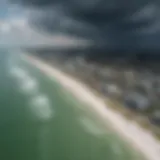

Unveiling the Splendor of Clearwater Florida Radar Weather: A Complete Guide for Weather Enthusiasts
